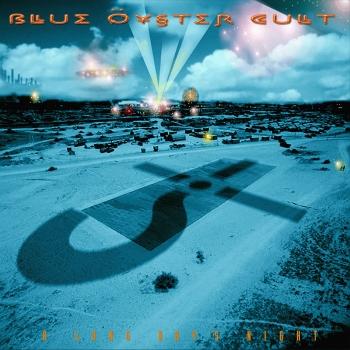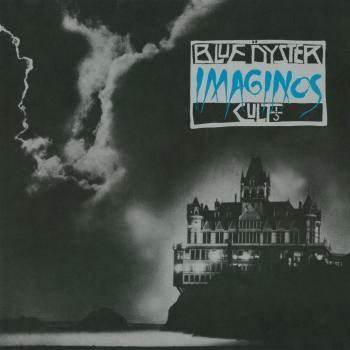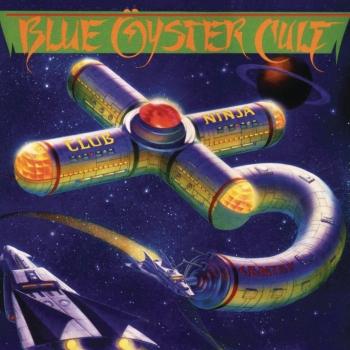
Blue Oyster Cult (Remaster) Blue Oyster Cult
Album info
Album-Release:
1972
HRA-Release:
13.07.2016
Label: Sony / Columbia / Legacy
Genre: Rock
Subgenre: Hard Rock
Artist: Blue Oyster Cult
Composer: Eric Bloom, S. Pearlman, A. Bouchard, D. Roeser, R. Meltzer, H. Farcas, J. Bouchard, A. Lanier
Album including Album cover
I`m sorry!
Dear HIGHRESAUDIO Visitor,
due to territorial constraints and also different releases dates in each country you currently can`t purchase this album. We are updating our release dates twice a week. So, please feel free to check from time-to-time, if the album is available for your country.
We suggest, that you bookmark the album and use our Short List function.
Thank you for your understanding and patience.
Yours sincerely, HIGHRESAUDIO
- 1 Transmaniacon MC 03:21
- 2 I'm On the Lamb but I Ain't No Sheep 03:10
- 3 Then Came the Last Days of May 03:31
- 4 Stairway to the Stars 03:43
- 5 Before the Kiss, a Redcap 04:59
- 6 Screams 03:10
- 7 She's as Beautiful as a Foot 02:58
- 8 Cities On Flame with Rock and Roll 04:03
- 9 Workshop of the Telescopes 04:01
- 10 Redeemed 04:01
Info for Blue Oyster Cult (Remaster)
Although Long Island, N.Y. 's Blue Oyster Cult would become one of the top rock bands of the '70s with such metallic radio hits as 'Don't Fear the Reaper' and 'Godzilla,' the band began as a spacey psychedelic band, as evidenced on the group's self-titled debut from 1972. While distorted guitar riffs hint at the band's future hard-rocking direction, the songs have a dreamy quality and sport such mysterious titles as 'Before the Kiss, a Redcap' and 'She's as Beautiful as a Foot.' But Blue Oyster Cult's first three releases, (1973's „Tyranny and Mutation“, 1974's „Secret Treaties“, and their self-titled debut), proved to be an important influence on a wide range of future bands, such as punkers the Minutemen and headbangers Metallica.
While several tracks are well known to most B.O.C. fans (such as the rockers 'Transmaniacon MC' and 'Cities on Flame With Rock and Roll'), the more obscure selections are just as exceptional. The aforementioned 'She's as Beautiful as a Foot' is downright eerie, while 'I'm on the Lamb, But I Ain't No Sheep' is an early version of the band's later standard 'The Red and the Black.' Blue Oyster Cult remains one of hard rock's finest debuts.
„Two years before Kiss roared out of Long Island with its self-titled debut, Blue Öyster Cult, the latest incarnation of a band assembled by guitarist Donald 'Buck Dharma' Roeser and drummer Albert Bouchard in 1967, issued its dark, eponymously-titled heavy rock monolith. Managed and produced by the astronomically minded and conspiratorially haunted Sandy Pearlman, BÖC rode the hot, hellbound rails of blistering hard rock as pioneered by Steppenwolf, fierce mutated biker blues, and a kind of dark psychedelia that could have only come out New York. The band's debut relied heavily on the lyrics of Pearlman and rock critic Richard Meltzer, as well as Pearlman's pioneering production that layered guitars in staggered sheets of sound over a muddy mix that kept Eric Bloom's delivery in the middle of the mix and made it tough to decipher. This was on purpose -- to draw the listener into the songs cryptically and ambiguously. From the opener, 'Transmaniacon MC,' the listener knew something very different was afoot. This is dark, amphetamine-fueled occult music that relied on not one, but three guitars -- Bloom and keyboardist Allen Lanier added their own parts to Roeser's incessant riffing: a barely audible upright piano keeping the changes rooted in early rock and the blues, and a rhythm attack by Bouchard and his brother Joe on bass that was barely contained inside the tune's time signature. From the next track on 'I'm on the Lamb But I Ain't No Sheep,' elliptical lyrics talked about 'the red and the black,' while darkening themselves with stunning riffs and crescendos that were as theatrical as they were musical, and insured the Cult notice among the other acts bursting out of the seams of post-'60's rock. Other standouts include the cosmic 'Stairway to the Stars,' the boogie rave-up 'Before the Kiss, a Redcap,' that sounded like a mutant Savoy Brown meeting Canned Heat at Altamont. But it is on 'Cities on Flame With Rock & Roll,' that the Cult's sinister plan for world domination is best displayed. From its knotty, overdriven riff to its rhythm guitar vamp, Vox organ shimmer, its crash cymbal ride and plodding bass and drum slog through the changes -- not to mention its title -- it is the ultimate in early metal anthems. Add to this the swirling quizzicality of 'Workshop of the Telescopes' that lent the band some of its image cred.“ (Thom Jurek, AMG)
Eric Bloom, stun guitar, keyboards, vocals
Donald 'Buck Dharma' Roeser, guitar, vocals
Allen Lanier, keyboards, rhythm guitar
Joe Bouchard, bass, keyboards, vocals
Albert Bouchard, drums, vocals
Recorded October 1971 at The Warehouse, New York
Engineered by Bill Robertson, David Lucas
Produced by Murray Krugman, Sandy Pearlman, David Lucas
Digitally remastered
Blue Öyster Cult
Spanning three decades, Blue Öyster Cult has a long and storied history. The band got its start in the late ’60s on Long Island, New York, as the Soft White Underbelly, but each member had been involved in bands previously in high school and college, before ending up in the “right place at the right time” to create the beginnings of Blue Öyster Cult.
The threads that eventually wove together to create Blue Öyster Cult got their start in upstate New York.
Long Island native Donald Roeser and Albert Bouchard (of Watertown, New York) met at Clarkson College, in Potsdam, NY. The two were introduced by a mutual friend, Bruce Abbott (who later co-authored “Golden Age of Leather” with Donald). With Abbott and two other friends, they formed “The Disciples” and played college parties and local beer halls. The next year, the band reformed and played the same circuits as “Travesty” (named after the Blues Project album). Through all this, their studies fell by the wayside, and both Albert and Donald decided to quit college to concentrate on playing music full-time.
Eventually “Travesty” broke up, Donald and Albert took seperate paths for a while. Donald went back to Long Island, and Albert took a musical opportunity in Chicago. After moving there, though, the band fizzled, and Albert returned to NY and joined Donald. In the meantime, Donald had been jamming with local musicians, and had met a person that would become very influential in their future: Sandy Pearlman.
Sandy Pearlman became interested in rock music around the time of the British Invasion, and was a pioneering voice of rock criticism, opening a new field for creative writers like Lester Bangs. Both Pearlman and his friend Richard Meltzer were contributors for seminal magazine “Crawdaddy!,” the first magazine that dedicated itself to analysis of rock music and its culture.
Allen Lanier came into the fold by way of guitarist John Wiesenthal. Allen had accepted employment at a film company at which Wiesenthal was also an employee. After becoming acquainted, Wiesenthal invited Allen out to Long Island to meet and jam with the loose group of musicians he played with, and Allen began to regularly jam with them.
An old house near Stony Brook College became ground zero for the formative band, and casual jams with whomever happened to be hanging around began to turn into rehearsals with a core band, which included Wiesenthal, Donald, Albert, Allen and Andrew Winters, a school friend of Donald. It was 1967.
Pearlman (along with Meltzer and Wiesenthal) had been a student at Stony Brook, and was becoming increasingly involved in the music scene. When he heard the formative combo, he instantly recognized the talent at work. He had an idea for a band, and thought that this group of musicians had the chops to put that idea into play. The musicians saw that Pearlman’s contacts and stature in the local (and increasingly national) scene could help them spawn a career as well, and an alliance was formed.
This album contains no booklet.



















